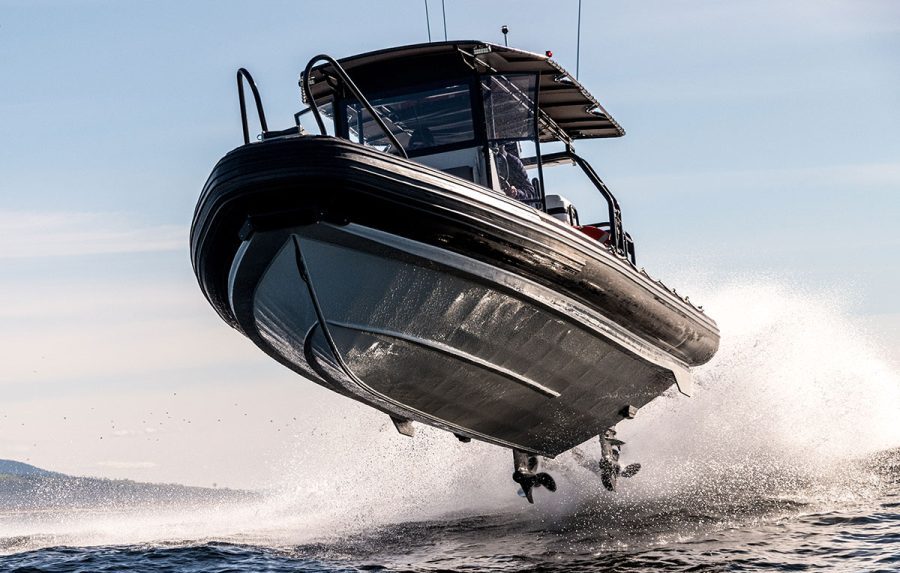Tasmanian boatbuilder PFG Group has launched demonstrator versions of its 8m and 11m Sentinel tactical watercraft – with one 8m unit already having been snapped up domestically by the Queensland Police Service. The RIBs were designed, by One2Three Naval Architects, for reduced risk of capsizal and rollover. Patrick McManus, naval architect at One2Three, tells Ship & Boat International: “They have low-spray hullforms with excellent control through turns, and include incorporated lifting arrangements.” First and foremost, the Sentinel sisters are designed to be tough enough to handle the turbulent waters of the Southern Ocean.
Two key features define the Sentinel: its ability to offer smooth rides, thanks to the boat’s low centre of gravity; and its shock-absorbing, high-density polyethylene (HDPE) hull, enabling the RIB to survive beach landings, rock landings and severe collisions. “Unlike aluminium and composite materials, HDPE is extremely robust and has high impact and abrasion resistance,” McManus explains. “It is a high-viscosity material that will not fatigue or crack. The hull plate is significantly thicker than that of a conventional vessel.”
As well as helping to make the Sentinels ‘indestructable’, HDPE’s lightweight nature – “lighter than water”, McManus says – has rendered the boats virtually ‘unsinkable’, even when they encounter extreme damage and/or swamping. Another bonus is that the material is low-maintenance. “HDPE will not corrode; it is impervious to salt water, aggressive liquids and fuels,” he says. “It doesn’t need paint protection, cathodic protection or any other preventative maintenance. This results in increased operational availability due to reduced maintenance, and lower whole of life costs.” Also, by eliminating the need for biocidal antifoulings and paint systems, HDPE-hulled boats do not release toxic chemicals into the water. As the material is 100% recyclable at the end of its lifespan, HDPE leaves a significantly reduced carbon footprint.
The Sentinel models will be built to order and customised to meet each buyer’s specific operational requirements. “Both vessels in the Sentinel range have the capability for outboard or inboard engines, with drive legs or waterjet configurations,” McManus says. The initial models include twin 200hp (149kW) Suzuki outboards for the 8m Sentinel, while the 11m version (aka the Sentinel 1100) is fitted with two Cummins QSB6.7 inboard diesels, driving Hamilton waterjets through ZF286 gearboxes.
McManus adds that the future evolution of the Sentinel class could see the boats adopt autonomous capability and systems integration.
(For the full article and technical particulars, see Ship & Boat International July/August 2022)






